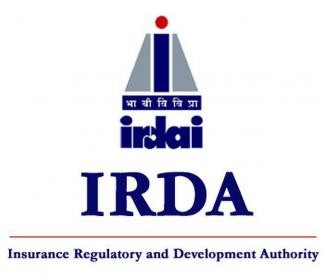We note that the final guidelines are somewhat more favorable than the earlier draft. Based on our preliminary calculations, surrender income could decrease by approximately 55-70%. It’s too early to quantify the impact on the Value of New Business (VNB) margin, as insurance companies might offset this by adjusting distributor terms or making changes to internal rate of return (IRR) calculations,Shrikant Chouhan, head equity research, Kotak Securities
Hyderabad: In a pro customer step, that could affect the margin of the life insurers, the regulator IRDAI wants them to pay a special surrender value (SSVs) from the first year itself provided one full year’s premium has been paid by the policy holders.
The IRDAI asked insurers to implement this SSV rule by September 30, 2024.
IRDAI, in its newly issued Master Circular for life insurers on Wednesday, has specified that that the SSV should at least equal the expected present value of the paid-up sum assured, paid-up future benefits, and accrued benefits.
Earlier the SSV for guaranteed return products was zero in the first year and up to 35 per cent in the subsequent years.
The IRDAI has clarified that for policies with limited premium payment terms of less than five years and single premium policies, SSVs become payable immediately after receipt of the first full-year premium or single premium.
Accordingly, to provide transparency, the domestic life insurers now have to prepare illustration including policy year-wise Guaranteed Surrender Value (GSV), SSV, and surrender values payable for the policy holders.
Shrikant Chouhan, head equity research, Kotak Securities, said, “The IRDA has issued the final master circular on life insurance products, significantly reducing surrender charges on traditional savings plans. We note that the final guidelines are somewhat more favorable than the earlier draft. Based on our preliminary calculations, surrender income could decrease by approximately 55-70%.”
It’s too early to quantify the impact on the Value of New Business (VNB) margin, as insurance companies might offset this by adjusting distributor terms or making changes to internal rate of return (IRR) calculations. While the valuation of the insurance sector remains supportive, investors are looking for stability and clearer visibility.
Also, the Irdai has allowed a host of facilities for the life insurance policy holders against his or her policies.
Issuing a master circular which consolidates all regulations with regards to life insurance policies, the Irdai said a policy holder can use health riders for covering health related contingencies/emergencies without recourse to surrendering the policies.
The facility of policy loan is now mandatory in all life insurance savings products, enabling policyholders to meet liquidity requirements.
The regulator has also now allowed facilities of partial withdrawal under pension products enabling the policyholders to meet their specific financial needs for important life events like higher education or marriage of children; purchase/construction of the residential house/flat; medical expenses, treatment of critical illness.
According to the Irdai, in case of surrenders, reasonableness and value for money to be ensured for both surrendering policyholders and continuing policyholders. To facilitate financial planning and enhance the flexibility in premium payments, insurers are now permitted to offer products with range of premium payment term.
The IRDAI has also allowed variety of products and product features like annuity products to have pay-out option with payment linked to publicly available benchmark, fund-based products for non-employer-employee groups and index linked products.
The free look period, which provides time to review the policy terms and conditions is now 30 days as against 15 days earlier.
The latest master circular follows a similar exercise by the regulator for general insurance policies.
“This is an important step in the series of reforms taken up by the insurance regulator with interests of the policyholders at the core. A conducive environment is now facilitated to spur innovation, enhance customer experience and satisfaction,” Irdai said.
In case of surrender of policies, reasonableness and value for money is to be ensured for both surrendering policyholders and continuing policyholders, Irdai said.
Further, the regulator said robust systems should be in place for grievance redressal of policyholders.
“In case, the insurer does not appeal against the award of insurance ombudsman and does not implement the same within 30 days, a penalty of Rs 5,000 per day shall be payable to the complainant,” the circular said.
Insurance companies have also been asked to put in place mechanisms to improve persistency, curb mis-selling and avoid financial loss to the policyholders and also enhancing long-term benefits to them.
Customer Information Sheet (CIS) has been introduced which provides policy related information in simple and easily understandable language, explaining various policy benefits and terms & conditions so that the policyholders can find a snapshot of the policy in one place. This forms a part of the policy document. This is in addition to the improved Benefit Illustration of products to be made available to a prospect/policyholder

